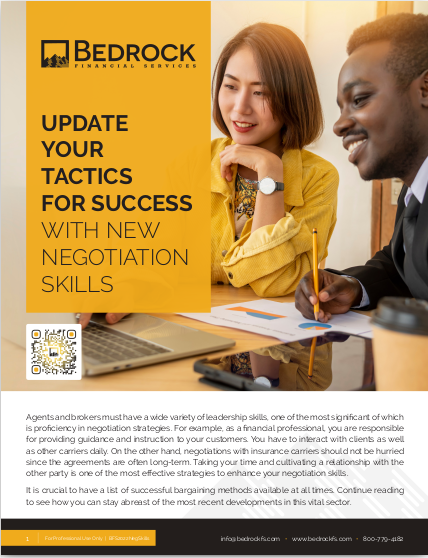Key Takeaways
-
The first 10 minutes of any client call set the emotional tone, pace, and outcome of the entire conversation.
-
Intentional structure, tone calibration, and strategic listening within this window are the strongest predictors of trust and conversion.
Why the First 10 Minutes Carry So Much Weight
In 2025, with clients more distracted, skeptical, and comparison-focused than ever, attention is a luxury. When someone picks up the phone or logs into a virtual meeting with you, their trust level is neutral at best. They’re waiting to be convinced—either that they’re in the right hands or that they should keep looking.
This means the first 10 minutes aren’t just the start of the call. They are the call—because they determine whether the rest of it will matter at all.
What Your Prospect is Thinking—Right Now
Clients today come with a different mental checklist than in previous years. It’s no longer about who offers the best rates. It’s about alignment, feeling heard, and whether you seem like someone who would really look out for them.
In the first few minutes, prospects subconsciously evaluate:
-
Are you listening to me, or are you waiting to speak?
-
Do you understand my specific life stage or are you going to generalize me?
-
Will this conversation be safe or pushy?
You can have the most accurate recommendations in the world—but if you don’t pass this initial gut-check, your credibility won’t even get a chance to show up.
Structure Creates Confidence
Structure isn’t a script. It’s a sequence that creates clarity. When your opening 10 minutes follow a natural flow, your client feels safe. They don’t need to wonder what’s coming next. They feel like they’re in capable hands.
Here’s a proven structure you can adapt:
1. The Warm Acknowledgment (1–2 minutes)
-
Begin with a calm pace.
-
Thank them for their time. It shows you value it.
-
Say something small that shows you remember a detail (location, life stage, etc.).
-
Don’t rush. A slower tone implies control and confidence.
2. Set the Frame (1–2 minutes)
-
Let them know what this call will look like.
-
Example: “In the next 20–25 minutes, I want to learn about your situation, walk you through options relevant to where you are, and make sure you leave this call with clarity—even if you’re not ready to make a decision yet.”
-
Doing this lowers their defense and raises their comfort.
3. Invite Their Story (3–5 minutes)
-
You should be speaking less here.
-
Use open questions: “Can you walk me through what made you want to have this conversation today?”
-
Let them tell you what they care about in their own words. The earlier you get their phrasing, the better you can mirror it later.
4. Summarize and Confirm (1 minute)
-
Briefly repeat what they’ve said: “So if I’m hearing you right, the big priority for you is X, and you’re also concerned about Y. Is that correct?”
-
This shows respect. It also gives you a clear checkpoint before you move into any education or suggestions.
What Happens If You Skip This Window
When agents jump straight into facts, pitches, or product details within the first 5 minutes, three things happen:
-
You unintentionally trigger resistance. The client may nod politely, but they’ve stopped trusting you.
-
You appear interchangeable. If you sound like every other agent, they’ll treat you like one.
-
You lose leverage. Once they’re disengaged, it’s hard to get them emotionally reconnected later in the call.
And worst of all, even if they say “I’ll think about it” and seem polite, they likely won’t come back.
What Actually Builds Momentum in the Call
Momentum in these early moments comes not from persuasion—but from permission. When clients feel seen and respected, they invite your expertise instead of resisting it.
Here are specific ways to earn that invitation:
-
Match their tone but remain anchored in yours. If they’re nervous, stay steady. If they’re casual, stay professional.
-
Echo their priorities before introducing yours.
-
Never overtalk. The more silent space you allow them to fill, the more trust forms.
Silence Is More Powerful Than You Think
Too many insurance professionals fear silence. But intentional silence in the first 10 minutes can work in your favor:
-
It signals thoughtfulness.
-
It encourages the client to say more than they planned.
-
It makes your eventual words carry more weight.
After you ask a question—pause. Don’t jump in. Let them fill the space.
The Shift Happens Around Minute 10
If you’ve done it right, something begins to change around the 9–10 minute mark:
-
Clients start asking you questions instead of the other way around.
-
They begin to lean in rather than hold back.
-
You feel them drop their guard—and give you permission to lead.
This is the moment the conversation shifts from transactional to relational. From skeptical to collaborative. And from passive to engaged.
What to Avoid in the First 10 Minutes
There are common missteps that sabotage trust early:
-
Talking about yourself too soon.
-
Overexplaining credentials, especially in the first few minutes.
-
Using jargon without context.
-
Speeding through the call agenda.
-
Sounding like you’re rushing to a pitch.
Your goal isn’t to impress. It’s to invite. That starts by making the client feel like this isn’t about you—it’s about them.
You Can’t “Recover” Later in the Call
There’s a myth that you can save a bad opening by ending strong. In 2025, that rarely works. If a client mentally checks out in the first 5–10 minutes, the rest of your call is just noise to them.
It’s not about closing strong—it’s about opening in a way that deserves a close.
Your emotional tone, pace, and curiosity in those early moments are what buy you the space to eventually present, educate, and recommend.
Train for the First 10 Minutes Like It’s a Skillset
You can’t wing this part of the conversation. It’s too important. It deserves practice and refinement.
Here’s how you can improve:
-
Record your calls and listen to just the first 10 minutes.
-
Write down what percentage of time you’re talking.
-
Track how long it takes you to set the frame.
-
Evaluate whether your tone sounds inviting or robotic.
-
Identify whether your questions are genuinely open-ended.
Then, refine. Over time, these 10 minutes will become your most polished, powerful stretch of any client interaction.
Strong Starts Turn Into Long-Term Relationships
The best part about mastering the first 10 minutes is that it doesn’t just affect this call. It echoes into every interaction that follows.
When clients feel respected right away:
-
They reply faster to follow-ups.
-
They’re more likely to refer you to others.
-
They trust your advice more deeply.
Every future decision, review, and referral begins here—in the way you made them feel in minute one.
Your First 10 Minutes Shape Their Future Decisions
The beginning of the call isn’t a warm-up. It’s the proving ground. It’s where clients decide if you’re trustworthy, skilled, and worth listening to.
Don’t let those minutes happen by default.
Be intentional.
Because when you treat those first 10 minutes like they matter—they do.
Start With Us, Start Strong
If you’re looking to master how you show up in every client conversation, especially in the high-stakes opening minutes, you don’t need to figure it out alone.
At Bedrock Financial Services, we help independent insurance professionals like you refine your outreach, structure your conversations, and build trust faster. Our training, tools, and support are designed to turn hesitant leads into long-term clients.
Sign up today to get access to real strategies, built around real conversations.
We don’t just help you sound better—we help you be better.







